‘If Anything Happens I Love You’ – Q&A with Will McCormack & Michael Govier
Writers/director team Will McCormack and Michael Govier recently joined forces in the creation of the animated short film If Anything Happens I Love You, recently released on Netflix. Produced by Govier with Maryann Garger (The LEGO Ninjago Movie), Gary Gilbert (La La Land, Gerald Chamales (The Irishman) and exec produced by Laura Dern, Jayme Lemons, Peter Morgan, Sydney Holland, Will McCormack, Robyn Klein and Jeremy Ross, the film was created “for the ones lost, and the ones left behind” and masterfully tells the story of two grieving parents navigating the inevitable emotional void that comes with mourning the loss of their child in the aftermath of a tragic school shooting.
Made in partnership with Everytown for Gun Safety and with an entirely-female animation team, the film also boasts the talents of The Inner City Youth Orchestra of Los Angeles, the largest African American orchestra in the USA. Concluding this week’s interview series focusing on new Netflix animated content, Skwigly writer Martyn Warren chatted with Will McCormack and Michael Govier to learn more.
You both previously worked as actors for major films and television shows. What was it like to transition into the director’s chair?
Michael Govier: It was very organic. Both Will and I came up through the theatre, so we’ve done a lot of stage shows and a lot of live performances. I think that transition was very good. As actors we performed all the roles and acted things out in sequences, so for the look and design that was very helpful.
As far as transitioning, it’s the first time we’ve directed an animated short. Previously I’ve done some directing on stage, but nothing of this calibre so it was very exciting, a very organic process and a good collaborative working relationship between the two of us.
Will McCormack: I agree with Mike. I think as part of an actor’s DNA you’re naturally collaborative. Collaboration comes really easily to us. Whether it’s writing or acting or directing, the older I get they all seem to be more connected than I ever imagined.
You’re really trying to get to the centre of something and no matter how you can get there, you should take whichever path helps. I think having been an actor, writer and director, they all sort of inform each other in ways that are really illuminating the older I get and the further I go into the business. They all sort of seem to connect.
How did you both get involved with If Anything Happens I Love You?
MG: We met at an acting class in the Valley. We became fast friends and we were always getting together, talking about writing (we were both writers) and developing something. Early on I kinda pitched Will an idea, telling a story with shadows and showing that shadows can be the inner life of the things you can’t see within people, so that was kinda the beginning of the process. Will is just a master writer already! He’s an amazing actor, but he’s just a master writer and it was so fun to work with him and collaborate and build out the whole rest of the script and the film.
WM: Yeah it was really exciting. We’re writers so we were in the struggle together and we would meet for coffee and sandwiches. I’ve always been interested in grief and writing about loss, and Michael had this beautiful visualisation of these shadows and I thought “God, what a gorgeous way to represent grief.” Even trying to connect to these shadows, I thought that was a gorgeous image and it all sprung from there. We kept reading about the tragic recursive shootings that happen over and over and over again in America and that’s how we began. It really began with an image.
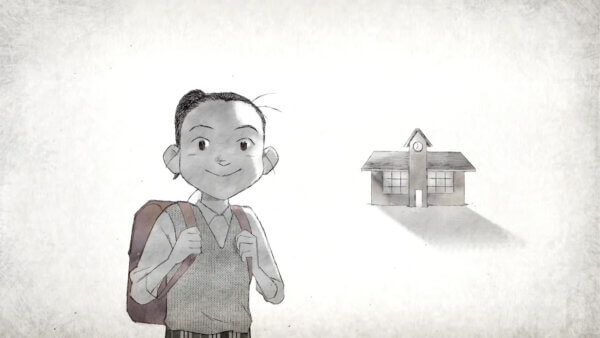
If Anything Happens I Love You (Netflix)
Why did you want to debut into animation, especially one surrounding the impact of school shootings?
MG: We feel this film could only be told in animation in this way and I think with animation, it’s a perfect gateway to create an access point to talk about these huge emotions and huge topics. It was always going to be an animated film and it was kind of the perfect access point. As far as why it’s a school shooting, Will and I didn’t grow up in a time where you have active shooter drills. We didn’t go to school and have those experiences. Now our nephews, cousins, everyone else younger than us has those experiences consistently so this is a thing that actually impacts more people just going through those drills. You’re stressed about the possibility of this happening and so it’s a reality in a world here and so we wanted to talk about this and the fact that Will and I love education and we’re obsessed with learning, that’s why we met at a class. We’re obsessed about furthering ourselves and wanted to learn new things and the fact that that location isn’t safe and that extra added stress, we wanted to show that.
We also wanted to show the loss of life, the grief, and everyone can kind of relate to this in different ways depending on the grief you’ve experienced, but this particular kind of grief. Sometimes people get left behind and the news cycle flips and they don’t really go back to these communities and talk to people and help people deal with the long term grief that is in the trauma being experienced.
WM: We had a proverb taped to the top of our corkboard which was ‘When your parent dies you bury them in the ground, but when your child dies you bury them in your heart’ and we thought so many parents had to deal with this type of loss that should be unimaginable but that is actually common here in America. It’s something we wanted to try and wrangle with because it is something that Americans face all too often and I’m glad that we did because it seemed to have resonated with people. The movie became sort of a viral phenomenon on TikTok where kids around America and across the world were connecting to the film and really availing themselves to the vulnerability of this moment and the fear that they feel and it was really incredible to see.
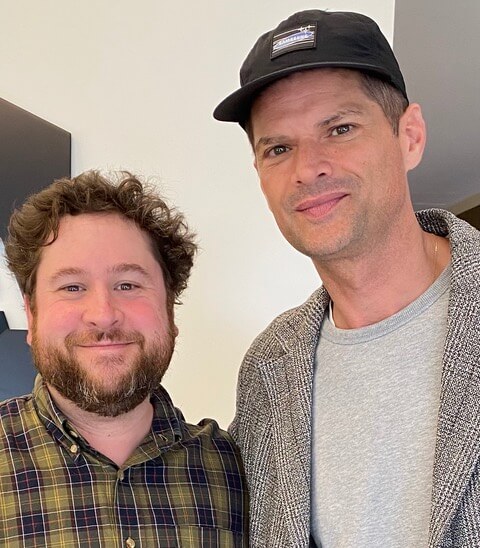
Michael Govier & Will McCormack (Image courtesy of Netflix)
How did Netflix come on board and what was it like to work with them?
WM: One of our executive producers is Laura Dern who has a strong relationship with Netflix, but also Maryann Garger, our producer, has a strong relationship there. We sent them the film and they loved it and it’s surreal to be partners with Netflix and all of a sudden have your movie in one billion homes! But to have a small 2D short film about grief and wake up the next morning and it’s across the world is a psychedelic feeling. It’s really, really cool.
MG: All we have been doing previously, you know, we were just the independent little guys and a little film that could and we were in film festivals. We were in over forty film festivals and kinda doing that circuit and having a wonderful experience. I think we won twelve awards and obviously a lot of it is all virtual this year and we only got to go to one festival live and it was exciting to have such a massive platform, because I think this film would have had to be in film festivals for thirty years to have that many people watch it so it was kind of this monumental moment. It’s like “Wow, we don’t have to go for thirty years for the same film! We can make another one.”
As actors, how did you incorporate those skills into creating the range of emotions that the characters throughout the film were able to portray?
WM: As writers, filmmaking’s a team sport. As actors, I think generally communicating the sort of actions that we wanted to the artist. I think Michael and I were committed to getting these moments right because in making an independent film with very little money, you don’t have a lot of time to reanimate. You really get into the moment one time. You don’t have a lot of room to mess up. I think as actors we embody this sort of spirit and emotion of the characters I think was really helpful. Would you say Michael?
MG: Absolutely. I think it was very helpful. We didn’t have a lot of runway. We couldn’t animate a sequence four or five or six times and keep breaking it down so we created reference videos to help facilitate moments. We created reference videos for looks and tone and it was very helpful because just like any performance with these characters, you’re trying to get to the root and the emotion of what they’re feeling at that moment, moment by moment. The nice thing is with animation is once you lock a moment, you have to move on when opposed to acting where there’s a lot more variables that you can drill down on a drawing where you can make the thing you want to look the way you want it.
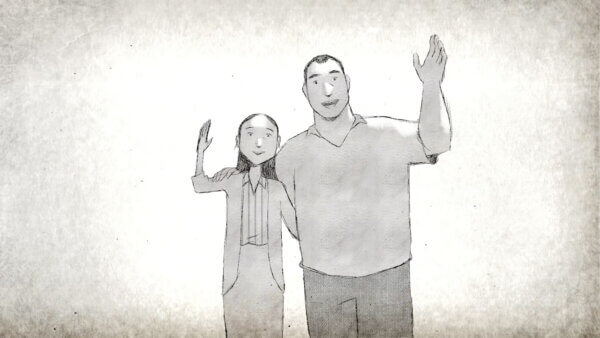
If Anything Happens I Love You (Netflix)
What was your choice to go with the animation style, especially with the use of the shadows and the appearance of stencil drawings?
MG: We love animation. We’re huge animation fans and this film we thought had to be in 2D because we wanted to get this very minimalist look and we had a north star that was ‘if it didn’t need to be put in the frame it didn’t need to be put in the frame.’ So a lot of times on the edges we kept dropping things off. You get an impression of a feeling. You get an impression of this and then as you pan from shot to shot, maybe things on the edges of the frame drop off and you just get the focus on the relationship and that particular moment. A very clear one is in the bedroom and they pan across the whole bedroom and you see a table, a chair, the bear, the nightstand, the whole room. Then when we cut back it’s just the bed, so the rest of the scene is just the bed. But you know there’s furniture, you feel that and so we kept peeling away.
Then the film felt like grief so it had these greys, it had this very minimal earth tones on the front half of the film and the introduction of colour was to show how memory, when you remember it, is in colour but it was still through the filter of grief. Even in the section which we call the memory section, the edges of the frame are still kinda grey and washed out because it’s still through the present day moment so there was a lot of thought in terms of that style and design and why it needed to look that way.
WM: I think it works thematically and visually. The parts of the animation we thought a lot about with that sort of leanest is it felt barren and desolate like grief can feel, but also memory. I think memory, when you remember things, you don’t remember everything that was in the room, but you do remember how you felt. I think just pairing down the animation to it’s essential elements were paramount for us because we thought we could do more with a lot less.
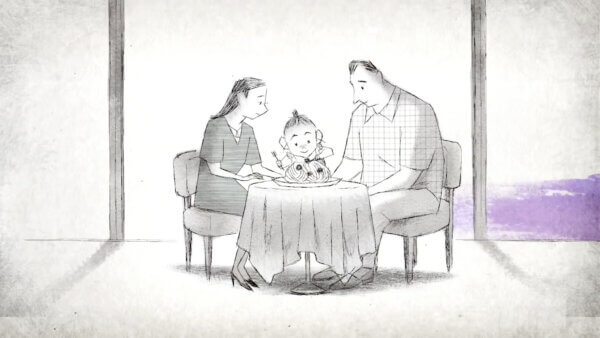
If Anything Happens I Love You (Netflix)
As well as the choice of animation, there was also some interesting choices with using colours too. What was the reason behind the focus on this specific colour palettes?
MG: We wanted to bring some of the items that the girl had touched to life because when you lose someone and you still have their items around you, like a scrap of paper with their handwriting on it or any kind of other thing that represents them, there’s still a lot of life charged in items and I think that was the thing. The daughter had painted that broken side of the house and she painted it so it was charged with a lot of her life, just like her little shirt. So we wanted to put more colour into those to give them that life and putting the colour through the memory and then into the end sequence where more warm colours and yellows came in to kind of show that the conversation is beginning about grief and some healing and hope is actually still there.
WM: We wanted to begin to have the movie come to life with colour through the daughter. I know as a parent you start to see the world through your child’s eyes. My son is obsessed with planes and if he’s not with me, which is rare, if a plane flies by I look up and go “P, p.” He can’t say plane but he can say “P, p.” You start to see and feel the world through children and I think that’s really nice in the film is that the movie begins to crackle and pop and begin to come to life as the daughter’s world is introduced.
What was it like to direct a team of animators and what challenges did you face?
MG: We were lucky. All of our production happened in 2019 so by the time the pandemic started, we were in post and we were just finishing up into the very start of the year and we finished the film before the pandemic took over. We were lucky in that regard. We didn’t have to have virtual components. We actually all got to get together and the film was built around my kitchen table, Will’s kitchen table and Maryann’s kitchen table so we always got together and it was just three animators and us. We would just go through everything and write down scenes and get re-inspired and figure out these moments and solve a moment.
WM: We got so lucky with our animation director Youngran Nho. She completely captured the pathos and the spirit of the film from the moment we met her. I knew from her first illustration which I think was the cat in the doorway. She knew the depth and soul of the movie and we were in good hands right from the start.
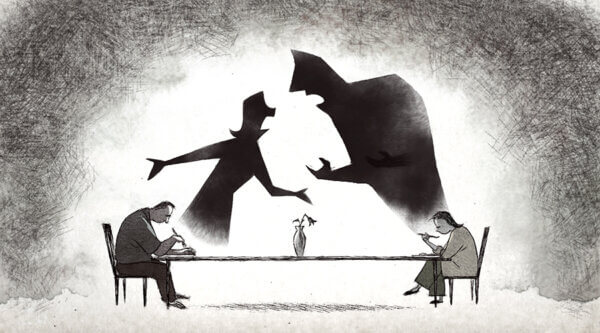
If Anything Happens I Love You (Netflix)
How important was the music to the film, especially with the partnership with the Inner City Youth Orchestra?
WM: In a movie with no dialogue it plays a really important part. The composer is a friend of mine. Her name is Lindsay Marcus and I admired her work in other films. We showed her the film and like Youngran she completely understood the movie from her very first compositions and that King Princess song we dropped into boards right from the beginning and we were lucky enough to get it for the film. With the youth orchestra, we met this guy, Charles “Chuck” Dickerson, whose the orchestra director and they were able to lay down a beautiful section of Beautiful Dreamer when the fireflies go into the restaurant. We talked a lot about the music and making a movie, you get lucky sometimes and I feel that with Lindsay and meeting Chuck Diskerson we were really lucky. And the music is so important because again there’s no dialogue so every single moment matters.
MG: The music is that other character and we really need it to move us through sequences and really fill it out. The Inner City Youth Orchestra was just amazing to work with. We sent them an early section of the film and they said “Oh my gosh we’d be honoured to be part of it” and we said “That’s wonderful.” Every year they do a concert for all the children and survivors of gun violence at the Walt Disney Concert Hall. A lot of what they do and the awareness they’re trying to bring is a very similar to what we’re talking about and they’re talking about grief within all these different communities.
Since the film has been on Netflix, what has the reception been like and how do you both feel about it?
MG: The reception has been incredibly strong and very wonderful and kind. A lot of people are reaching out. Survivors of gun violence have reached out. Also a lot of people who are just experiencing grief and the grief at this time. We had people saying they lost their grandparents or I lost a child this year. And showing grief in this way has given people an access point to talk and feel and have a moment. Also I think with TikTok all these kids and young people are having a moment to cry and getting that release and it kind of gives you permission in a way.
WM: We’ve been overwhelmed by the support we’ve had for the film and people’s willingness to connect to it emotionally and be available and be vulnerable and open to it. It’s really been incredible. We really love these film festivals that we were able to participate in, but to be all over the world instantly is an incredible thing and we are connecting with people all over the world. As a filmmaker, I think it’s completely the most rewarding feeling you can have.
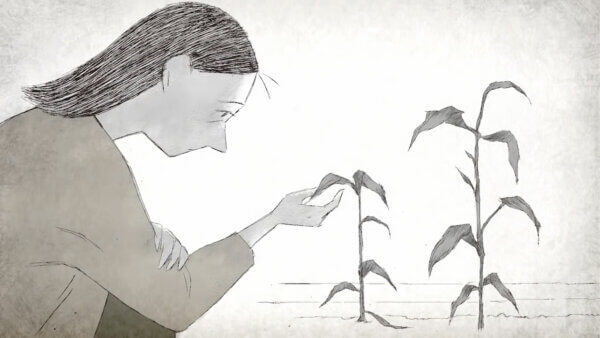
If Anything Happens I Love You (Netflix)
What are you both working or hoping to work on next?
WM: We’re currently not even speaking (laughs), this is the first time I spoke to him! No, but we’re already making another film together. We’re already making another animated short film and we’re also beginning a feature. We have a company and we’re excited to make more animated films that have something to say.
If Anything Happens I Love You is out now on Netflix


